By R. Chandra Prakash
The Wadiyar dynasty of Mysore State had a divine heart and a magic sceptre in their hand. Their belief in Goddess Chamundeshwari was the divine driving force behind their rule. And, as if to give credence to their belief in Goddess Chamundi, the dynasty’s womenfolk were equal participants in the protection and development of the State. Wadiyars built their Mysore State like craftsmen, for whom every detail was an important part of the whole.
A City Planners’ Dream
It is in a wholesome view of their rule that Mysore city became the fulcrum of Wadiyars’ magical creation. Palaces they built in Mysore were not as much for a show of pomp and pageantry, as much a portrayal of an overall majesty and vision of a capital city. The establishment of the hydro-electricity generation station at Shivanasamudram, near Mysore, in 1908, was only the second such facility in the country at that time. It electrified the prosperity of the State and illuminated the Mysore city and the Mysore Palace. Mysore city adopted the best practices found in the important European cities.
Mysore had buildings and châteaus; fountains and circles; gardens with manicured pathways and roads; gateways and arches; and intricately designed road-side electric lamp-posts and lakes. The residential areas were well spread out and provided with necessary facilities such as electricity, piped drinking water, underground drainage and very responsive civic administration. Mysore also prided with a University, a Race Course, a large Zoo and a Museum.
This iconic city was an image of any European city and was the pride of the Mysore State. It became a model capital city to be replicated by many other Princely States like Baroda, Jaipur and Indore. Therefore, Mysore was a city planners’ dream.

Fountains, Orchards and Gardens
The grand Amba Vilas Palace was surrounded by orchards, gardens and parks. Two fountains — the Hardinge Circle Fountain and the Elgin Fountain — on either sides of Chamaraja Circle on Albert Victor road gave a good expanse and elevation to the Mysore Palace. The Elgin Fountain was located at the very spot of the present K.R. Circle and was a part of large garden, pillared gateways on either side and very imposing Lansdowne building as a backdrop.
Hardinge Circle had a big circular fountain where the water springs rose in varying heights in several circles, like today’s much touted ‘modern’ musical fountain of Brindavan Gardens. And during the evenings, the fast changing illuminated and colourful lights of the fountain were very mesmerising. Music bands performed during the evenings at this fountain. Hardinge Circle had six access roads and each such entry point was having well-designed, polished, coloured and pillared gateways on either side of the roads with elegant electric lights, lamp shades at the top. Huge trees at the borders gave a green backdrop and enhanced the beauty of the fountain’s environs.

Just behind the Mysore Zoo, a Thandi Sadak, a green-cave formed by flowering creepers and the creeper buntings between huge trees on Lalitha Mahal road were distinct features of green Mysore. The Palace itself was surrounded by orchards and gardens along the fort walls. Curzon Park and Kuppanna Park provided greenery and vast visage to the entire surroundings facing the Amba Vilas Palace. The present KSRTC bus stand was an orchard with guava, chikkoo, mango and other fruit trees.
Imposing Buildings, Gateways & Arches, Circles & Clock Towers
The Amba Vilas Palace was surrounded by beautiful buildings. On its Southern side were aesthetically designed Gun House and two Palace Office Complexes. On its Western side were the Sanskrit College, the City Municipality building, Motikhana building and Lansdowne building. There were Fountains, Circles and Gateways of polished, coloured, granite stone pillars with very decorative lamps at several strategic junctions all round the Palace. The building housing the Palace Band and the Palace Motor Garage and the Chittaranjan Palace at the far end of the Albert Victor Road were part of the Amba Vilas Palace surroundings.
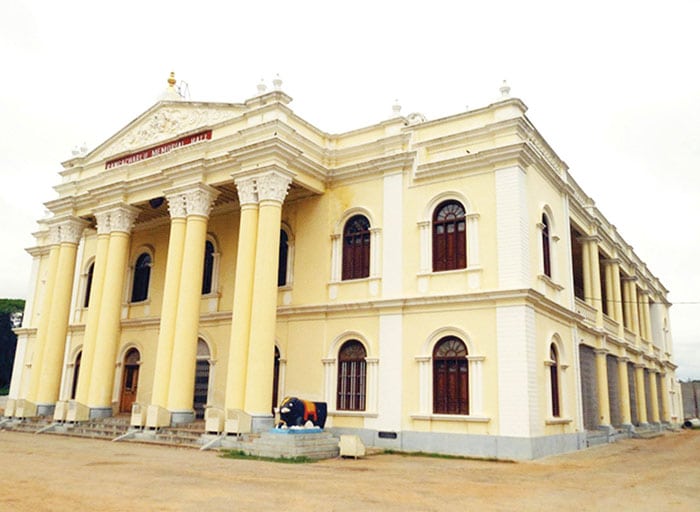
The Rangacharlu Memorial Town Hall, amidst the vast open green field in front of this Palace itself, was surrounded by private buildings of equally aesthetic architecture like Cauveripattanam building and the C.P.C building. Not very far away from the Silver Jubilee Clock Tower, there was Garden Hotel, mainly visited by the foreign guests.
The area beyond Amba Vilas Palace was laid out with well-planned metalled roads, wide footpaths with tall trees, aesthetically designed electric lamp-posts and public buildings of immense architectural beauty. Sayyaji Rao Road and Irwin Road got a lion’s share of such wholesome creations. Devaraja Market complex, K.R. Hospital and Cheluvamba Hospital buildings, Chamarajendra Technical Institute, Unani and Ayurveda Hospital and the Medical College building were located here.
Wellington Lodge behind the Central Police Station on Irwin Road is more than 200 years old and was the residence of Arthur Wellesley between 1799 and 1801 after the fall of Tipu Sultan. The neighbouring Government Guest House is yet another iconic building of the city.
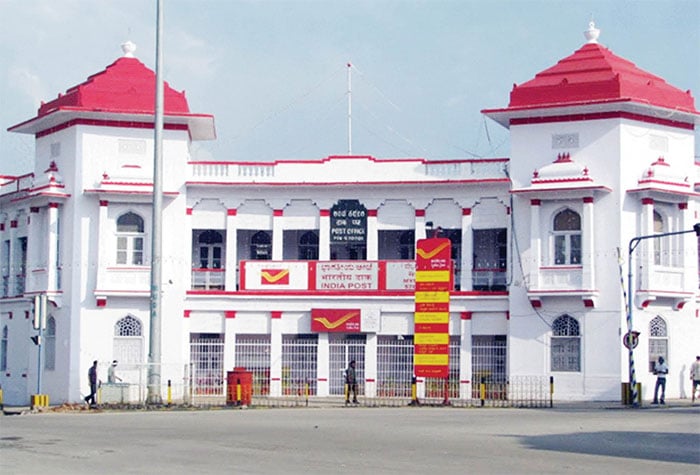
The Railway Station, Railway Offices, Exhibition buildings, Central Police Station building, Central Post Office building, State Bank of India building and the imposing Jama [Badi] Masjid, were located on the Irwin Road. Many more public buildings such as the Maharaja College, Oriental Research Institute, Attara Kacheri, City Courts, Vani Vilasa Market, Sports Club, Race Course, were individually designed. Lalitha Mahal Palace was the centre of beautiful châteaus type bungalows for the foreigners serving the royalty.
Christian Missionaries also had large architecturally beautiful buildings such as Victoria Girls School building on the other side of Sayyaji Rao Road, two Bartholomew Church buildings and the Wesleyan Press on Bangalore-Nilgiri Road. The Catholic Church had its iconic St. Philomena’s Church and very large swathes of lands with Philomena’s School, College, Bishop House etc. Most of these buildings were built with distinct architectural designs. Many of these buildings came up at different times. And there were many private buildings in the city centre — Dodda Pete, Sayyaji Rao Road and the Irwin Road — built in symmetry with the grand public buildings giving the city centre a look of dream city.
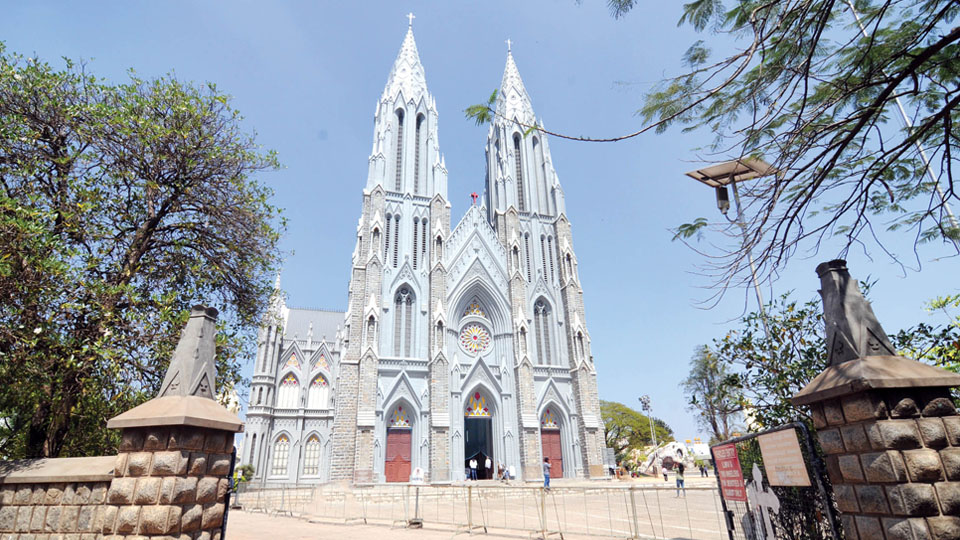
To add further beauty to some of these buildings were Dufferin Clock Tower, Silver Jubilee Clock Tower and big clocks on the towers of some public buildings such as Vani Vilas Market, to act as the time-keepers of the city.
In the subsequent years these buildings have become the grand heritage of Mysore.
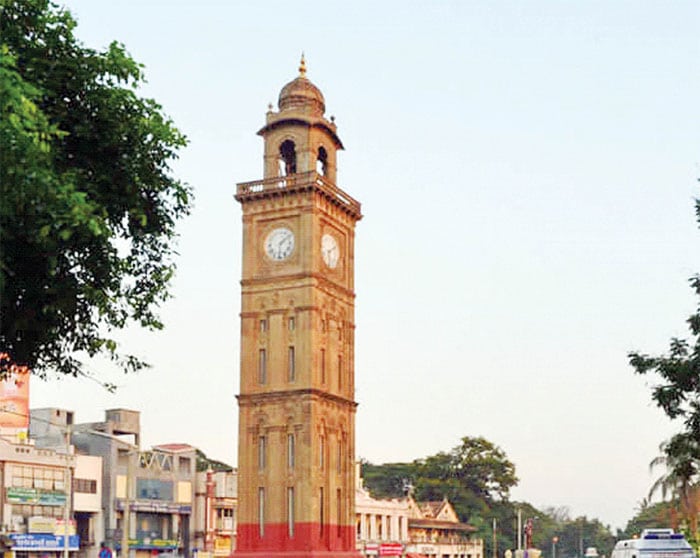
Makkaji Chowk – The Malgudi
Makkaji Chowk, an area between Sayyaji Rao Road and Dodda Pete became the commercial hub with shops which catered to every need of the public. Hotels, cinema houses, schools, beedi shops and snuff shops, watch shops and the cycle shops, cloth shops and ready-made garment shops, shoe shops; even arrack shops were there. One got here anything and everything one would want.
Eradu Vare Aane Galli, a small cleavage between Makkaji Chowk and Sayyaji Rao Road was market for the poor and the common man. War-time buses dislodged its rural passengers here. Magicians performed their tricks here. This was the Maya Bazar which spawned the idea of ‘Malgudi’ in the mind of R.K. Narayan.
Star of Mysore, the chronicler of Mysore city, has recorded for posterity the magnificence of Makkaji Chowk, both as commercial and cultural centre in a serialised articles by this author: 1. Makkaji Chowk that was in city [Oct. 13, 2015]; 2. Makkaji Chowk: Its distinct role in modernisation of Mysore [Nov. 5, 2015]; 3. Makkaji Chowk: A unique mix of traditional and modern businesses [Dec. 20, 2015]; 4. Makkaji Chowk: Bombay Anand Bhavan – Dominating building with enchanting entrance [Jan. 31, 2016]; and 5. Makkaji Chowk: Bombay Anand Bhavan – Where gastronomy & environs were customer centric [March 13, 2016].
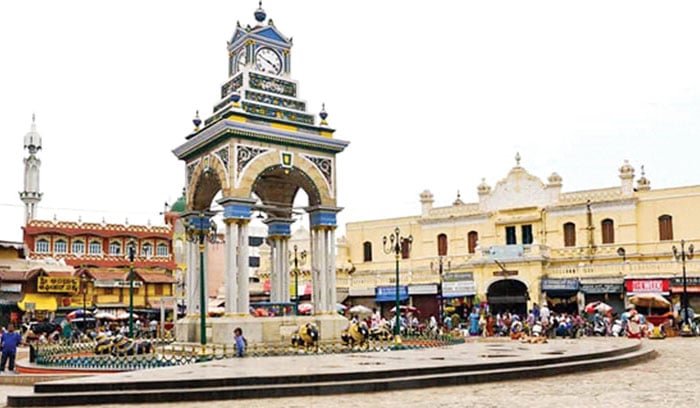
CITB & Planned Residential Layouts
City Improvement Trust Board [CITB] was established as early as 1904. It developed well-planned residential layouts in Lakshmipuram, Krishnamurthypuram, Chamundipuram, Saraswathipuram, Vani Vilas Puram, Yadavagiri, Mandi Mohalla, N.R. Mohalla and several more. And in the post-independence period Jayalakshmipuram, Gokulam I, II and III Stages; Brindavan and many more were developed. All these residential layouts were provided with underground sewage system, piped drinking water supply, electric supply lines, well laid out roads with proper shoulders and footpaths, road-side trees; storm water drains and many other infrastructural facilities.
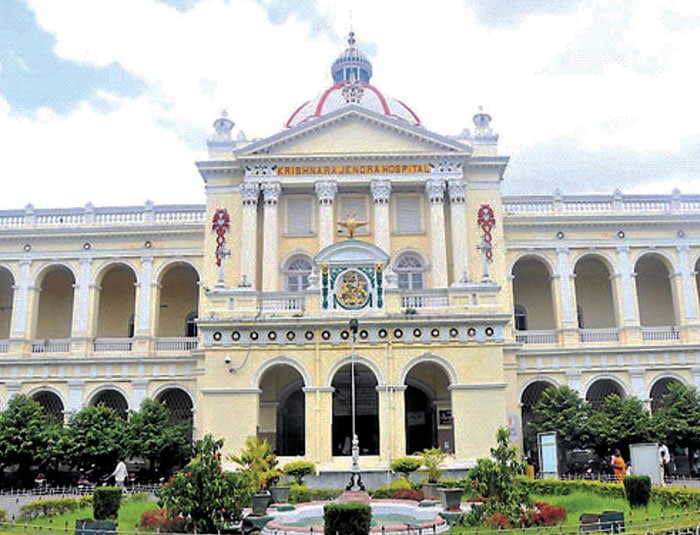
Responsive Municipal Administration
During the reign of Wadiyars, the Municipal Administration was under the direct supervision of Dewans and in the later years Commissioners. Quite early people’s participation, first by the nominations and later on through the elections was introduced, making Municipal Administration very active and alive to the people’s needs.
Early in the mornings the main roads were cleaned and watered by water tankers; solid wastes were systematically collected and shifted to far away dumping yards to be converted into fertilisers. Thus, Mysore was a city with distinctive history and heritage.
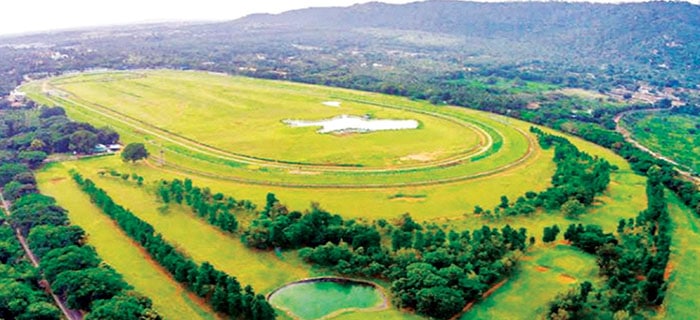
Tipping Point
At the dawn of Independence, the rule by the Royalty in the State was replaced by a rule by the Republic. Consequently, Mysore lost its royal patronage. The new Government shifted the State capital from Mysore to Bangalore. This transition brought a metamorphic drift in the fate of Mysore. Further, the 1956 State Re-organisation not only enlarged the State’s geographical boundaries, but it also thoroughly changed its socio-political ethos.
Mysore was the darling of ‘old’ Mysore State. But for the people and its representatives of ‘new’ Mysore State, it was Bangalore, the new seat of power that mattered. And this transition was the tipping point in the history of iconic Mysore.



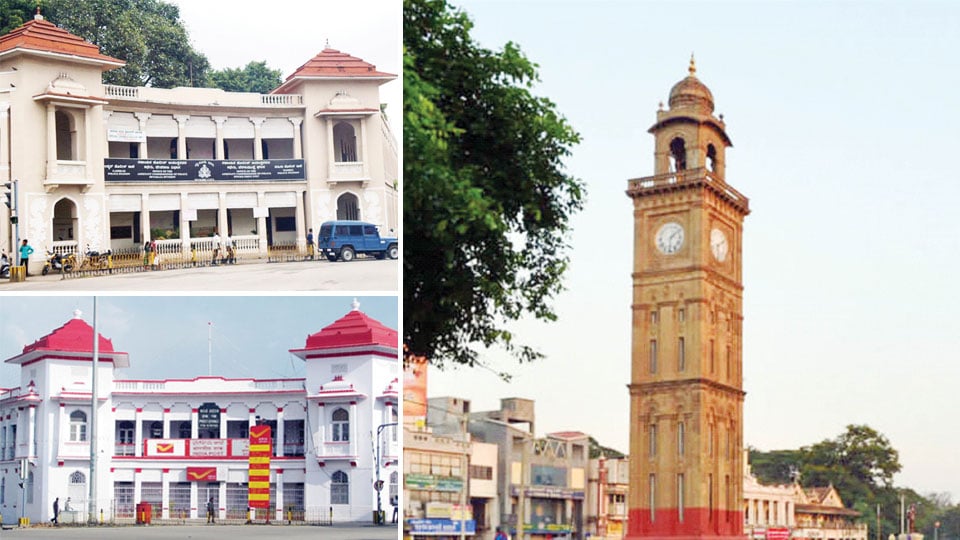
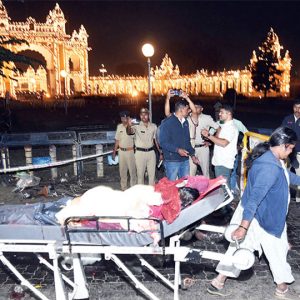
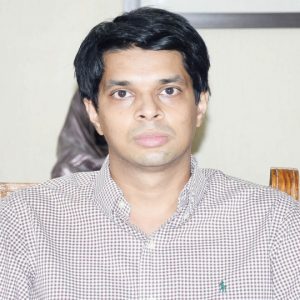
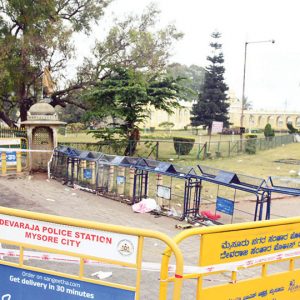
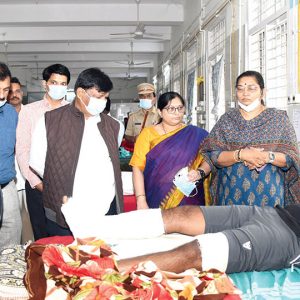
This author has very much repeated what he has said in his previous article, and of other articles in this series.
This series is very badly written, with facts obfuscated in favour of imaginary particulars. For example, although after Tipu’s defeat, the Wadiyars moved to Mysuru and built the Palace and other buildings mentioned over decades,
Bengaluru became Dewans’ city as all Dewans resided there, and improved the city. Indeed, it was a de facto Royal city with Nalwadi Wadiyar staying in his Bengaluru Palace for much of the year, and arriving to Mysuru nearer Dasara. During 1950s, my elder relatives say, it was the perfect Royal city with parks and institutions that was fit for a king. Mysuru remained a second class quiet city with inadequate educational and employment opportunities for young men and women. Looking at the Minto eye Hospital, Victoria Hospital, and Bowring and Lady Curzon Hospital, one could understand how important Bengaluru was for Wadiyars. JC Wadiyar too spent ,most of his time there, and later in his life, because of his health issues, his stay in Mysuru was brief.
Bengaluru after Karnataka ekikarana rapidly expanded in 1960s on wards with massive factories located near the city. Large numbers of immigrants from places in India arrived to expand that city, and the rest is history.
Mysuru too did not escape the pernicious effects of population explosion. By early 1980s, massive housing developments took place and dozens of housing extensions created. Mysuru, like Bengaluru was destroyed then.
Instead of regurgitating Mysuru’s history, this author should forward to see the unprecedented attack on this city by way of further expansion in and around the city in towns and villages.
The proposed extensions of rod and rail links to Kerala and Chennai, precipitated by the Central government, ignoring the Karnataka government, will condemn the city to a level of destruction, not even seen in Bengaluru.
Posters are warning about the invasion of Keralite gold smugglers and fake goods entrepreneurs, who operate in places like Dubai, Abu Dhabi and Muscat in the Gulf States, have already buying up lands for construction of their enterprises which help to launder their money. Within 5 years, one would see Mysuru airport expanded to receive passenger jetliners linking the city to Gulf States, with the population in and around the city expanding 5-fold.
Title this series aptly, what has any of this got to do with the title- ‘Has Mysuru Gone Bengaluru Way’? (Not just this, even the previous article in this series has the same problem, totally unrelated to the title.)
Mysuru will. certainly go the Bengaluru way as lot of vacant sites purchased by people just to multiply their investments not filled up. If serious decisions are taken by the government on site owners to either construct or taken over after giving sufficient time, one can continue to see the real Mysuru of yester years. In such an event take over of nearby villages for expansion does not arise.
@Questo
The author is highlighting the glory of Mysuru and indicates where it is heading to.
Simple to grasp.
Interesting that this author of 6-articl;es has not written about the ‘garadi manes’ as one dimwit suggested, Mysuru had, which it never did!
The right title and the right articles, it is that a reader needs a good brain cells count to understand it!
Did some one say that Mysuru had many ‘garadi manes’? There was none in my neighbourhood, I recollect. I knew some one who trained in a ‘garadi mane’, and said that the training was primitive and brutal. What was the context when ‘garadi mane’ was mentioned? Who mentioned it?
Title of the article does not sync with extolling the glory of the city Mysuru which permeates it throughout.It’s concern that the city which is known for natural beauty and is a treasure house of it’s great heritage should not be allowed to degenerate into a gigantic concrete jungle can be appreciated.
@Chkra..
It appears that you have comprehension problem..
If you did understand, you would have noticed that the author is lamenting on the direction that this city is taking which ends in the destruction of its glorious past. He has given the glorious past.
I bet, you cannot write half as clearly and as much as this author has done.
It all comes down to the brain cells count as a poster said, and you have this as a minimal count!
To some extent I agree that mysore has changed. I wish to add that some part of my childhood was spent there. Just mentioning of the places and roads brings back old memories. I have seen many dassera processions during His Highnes time(JCW) and had seen him in close quaters. In spite of all changes Mysore remains my Malgudi. Jaipur may be city of palaces but Mysore is city of dreams and let us not forget Mysore university which is the oldest and had students including my father who is 95 years old. Mysore is a magic city. It is a cultural city. It is Mahisasurana ooru. I can’t forget ballal hotel, ganesha theatre, hardwick school. Siddappa square, the enchanting landscapes of Maharaja and yuvaraja colleges, the towering Crawford hall, ontikoppal, nanjumalige and many more. The list is endless. I can go on and on, Even now whenever I visit this ancient city I don’t feel like coming back. I also used to enjoy reading the eveninger Saadvi paper. Fantastic memories. Mysore imitates europe in some respects. I have chronicled my stay in Mysore, it is going for print shortly. Jai Amma Chamundeshwari🙏
Posters who criticise the author and the title of these 6-part articles, simply criticise, without suggesting how the title of the articles should have appeared, giving examples.
@Srinivas claims about the ‘title sync” with the substance in his first sentence, and in the next lines he says the ‘great heritage’ -which the author has so lucidly illustrated.’ should not be allowed to degenerate’. thus agreeing with the substance of this article! I suggest those who criticise, give at least briefly what they think should be the title of this series of articles, remembering that the comparison is with Bengaluru.
The author in planning this many parts of articles, it appears had not prepared a brief draft of what goes in which part of the article series.
1. The parts 5 and 6 should have been parts1 and 2 which should have been the background of this city-its glory, heritage etc..Mysuru became the city of Wadiyars, after the defeat of Tipu and the mergence of the Palace underlined that thinking of Wadiyars.
The series should have emphasised the following, with critical observations:
2. But, the Dewans who preferred Bengaluru for their residence, developed that city -from Sir Seshadri Iyer down wards considered Bengaluru as the Royal City, as Nalwadi Wadiyar stayed there for most of the months in a year, with Mysuru left as a small enclave for ceremonial activities like Dasara. The author did not make this clear.
3. Bengaluru particularly under Nijalingappa as the CM, was hit with large state-owned – manufacturing factories first, located in its outskirts, and later under his successors with the large IT techies sweatshops, located at the new outskirts of the expanded city, which attracted massive numbers of immigrants from outside the state.
This placed immense pressure on city planners, who had no time to prepare proper plans as the city was over run with the heavy influx of people coming to the city. Blaming the city planners is nonsensical.
4. There was no recognition of population explosion taking place in India. India doubled its population in 3 decades and tripled it in the succeeding 2 decades! Every problem one sees in India today can be attributed to this massive increase in population.
5. Mysuru was never going to escape the effects of the above very rapid population growth, and the result is there to see. Mysuru has gone the Bengaluru way by the turn of the last Century-I would say by 1980s.
@Ramana
It is glaringly obvious that Mysuru has changed to such an extent, some one like me who was born, bred and educated in the city can hardly recognition in my visits.
Nostalgia often masks some home truths. Here are a few :
As for Ballal hotel, it was just a land mark, but the hotel itself was notorious for its poor quality food. Its owner , Ballal was a loud mouth with very in-disciplined brothers. Tell me about Raju-or Iyer Hotel, I would agree. Siddappa Square was just a prominent bus stop. It had a bus shelter and a masonry seating, populated by beggars!
Yuvaraja College for a long time was a government college, with its staff earning far less than what their colleagues took home as pay in the neighbouring Maharaja’s College which was a university college! Yuvaraja’s science education was neglected in favour of humanities. It took a long time to upgrade this college to offer degree courses in science. The above pay differential meant, it lost many of its very lecturers.
For a long time in Nanjumalige, the municipal authorities badly treated the farmers who brought their fresh vegetable and fruit produce every day, not even providing stall facilities. With the result, they were spreading their items on the footpaths! Their vegetables and fruits were the targets of stray cows, as a result!
It is silly to call it ‘Malgudi. RKN for most of his life remained a Tamilian, not even speaking the local language, declining invitations from the schools nearby his home in Lakshmipuram, where pupils wanted to hear from him talk about his ‘Swami and Friends , the Man Eater of Malgudi ‘etc.. When he moved to Yadavagiri, he was driven in his Mercedes car! He died in Chennai, his favourite city!
Mysore University is not the oldest university in India. With the exception of Kuvempu, all other VCs, did nothing to develop it.
The walk across the Crawford Hall was a pleasure.
JC Wadiyar, started well. We could enjoy seeing him on the top of the elephant howdha in the Dasara processions, but as the years progressed, by 1960s, he was surrounded by unsavoury crowd of people,. His health deteriorated as a result, his last Durbar was in the late 1960s, and sadly, he spent most of his time in Bengaluru, for his medical treatment. When he spent his days in the Mysuru Palace, he used to go to the Chamundi Hills every day at noon, his silver Rolls Royce speeding along the Ramanuja Road,. At one time, his car hit a young girl, who was put in the hospital with her leg broken. Luckily she did not die.
You missed the Tonga Wallahs and their harassment of passengers whose only crime was to hire them at the Railway Station, to take them to the destination. They fleeced the passengers at the destination taking them miles around the city, if they discovered their passengers were new to the city!
Garadikeri in west 7th cross of Ashoka road had a Sri Hanuman temple had a garadi which was converted to homes. I was born in one. On Ashoka road Jaggulal dharmshala behind post office had a garadi where I also practiced.
ನಾನು ಮೂಲ ಮೈಸೂರಿನವನು ನಾನು ಬಾಲ್ಯದಲ್ಲಿ ಸಂಪೂರ್ಣ ಮೈಸೂರನ್ನು ಸುತ್ತುತ್ತಿದೆ. ಈಗ ನನ್ನ ಮಕ್ಕಳಿಗೆ ಮೈಸೂರು ಪರಿಚಯಿಸುತ್ತೀದೆನೆ. ನನಗೆ ಮೈಸೂರಿನ ಐತಿಹಾಸ ಹಾಗೂ ಇಲ್ಲಿನ ಪ್ರವಾಸೋದ್ಯಮ ಜೀವನವನ್ನು ಕಟ್ಟಿ ಕೂಟ್ಟಿದೆ.
ನಾನು ಈಗ mysoreadda.com ಎಂಬ ಹೆಸರಿನಲ್ಲಿ ಪ್ರವಾಸ ಆಯೋಜಕನಾಗಿದೆನೆ. ಹಾಗೂ ನಮ್ಮ ಮೈಸೂರನು ಹೆಮ್ಮೆ ಯಿಂದ ಪ್ರವಾಸಿಗರಿಗೆ ಪರಿಚಯಿಸುತ್ತೇನೆ.